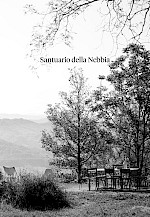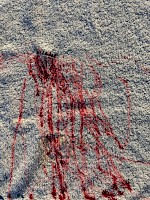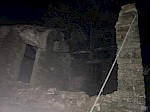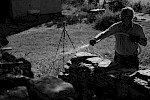How to Engage in DeSign?
Puppet master performing at Monastero Bormida | July 2024 as part of my PechaKucha presentation at Piet Zwart Institute / Master Design kickoff, september 2024
Prologue
This publication has 3 main chapters, all of them documents/reflections of an ongoing research.
In Sign vs Design we experiment with the definition of our practice, dwelling on the prefix 'de' embedded within it. Through language/semiotics/semantics —the single most defining tool/technique to shape our world view, and now a new world order?—, we enforce a revaluation of meaning ... positioning our selves for the next chapter: Staying with the Fog.
Now that we have come to grips with us (designers) being de-facto 'signers', we ask ourselves what it means to un-practice notions like: progress, solutions, intent from our actions. In solitude, with others and with other than human agencies.
All of these dialogues serve as a preamble for our last & final chapter: Santuario della Nebbia, where we learn how to localise our research —and to turn them into practice—, in the medieval borgo of Denice, Italy.
Introduction
Design — it seems so certain: to draw, to mark, to plan. But embedded within it is a ghost: the prefix de-. In most cases, de- (in Dutch: ont), marks a reversal, an undoing: deconstruct, derail, decompose. Yet in design, the de- is curiously ignored. We act as if to design is simply to sign — to assert form, to make clear, to command direction.
This forgetfulness is telling. Historically design, —dominant in the modern West—, has privileged the figure of the Signer: the planner, the problem-solver, the author of futures. Design is imagined as mastery —over space, over time, over function … over people's lives and their relations. It solves. It optimizes. It pushes progress. It is, in short: a belief in form, predictability, permanence, and being as stability.
But what if we stay with the de-?
De-sign, then, becomes not an act of signing, but of un-signing — a trembling of boundaries, a hesitation of intent. It gestures not toward the solution, but toward the unresolved. Where Parmenides insists "what is, is; what is not, is not."1 Heraclitus reminds us: "Everything flows, and nothing stays." and "No man ever steps into the same river twice."2 His world is not aligned to being, but to becoming. Flux. Impermanence. Mist.
To design from this Heraclitean perspective is not to fix the world with signs, but to participate in its transience — to attune to fog rather than to clarity. Fog is not failure. It is a medium of uncertainty. It resists capture. It interrupts forward motion. In fog, signs dissolve ... horizons vanish. Yet this is precisely where a different kind of knowing —and designing—, can emerge.
De-sign, in this reading, is not a regression. It is a necessary halting. A refusal of the violence of progress, certainty, and control. It is the site of becoming — tentative, tender, tangled.
This project begins with that pause. It asks: can we reclaim the de- in design? Not as an etymological fact, but as a speculative tool — a philosophical gesture — a way to reimagine the practice itself? To de-sign, then, is not to erase design — but to open it. To unfasten the sign, and step into the mist.
Language is never stable. A sign never fully means. Meaning is always deferred — différance3 — and the structure of our thought is haunted by what it excludes. Deconstruction is not destruction; it is the patient unsettling of certainties. It dwells in ambiguity, in the space between presence and absence. It does not solve — it opens. To de-sign, in this sense, is a deconstructive act. Not to end design, but to expose its metaphysics. To reveal the violence hidden in its assumptions of clarity, function, and resolution. And to propose another path — one of lingering, of becoming, of fog.
So we ask:
* What if the de- in design is not a flaw, but a clue?
* What if design is not about drawing the line, but un-drawing it?
* What if the designer is not a Signer, but a De-Signer — one who lingers in the unstable, the emergent, the contingent?
This is a turn. A revaluation. Not a rejection of design, but a poetic redirection — toward forms of practice that welcome not knowing, that trust the in-between, that design with (and in) the fog.










